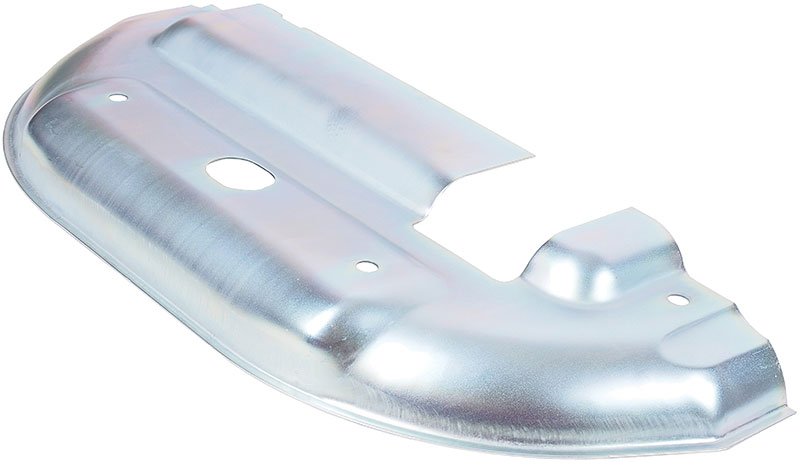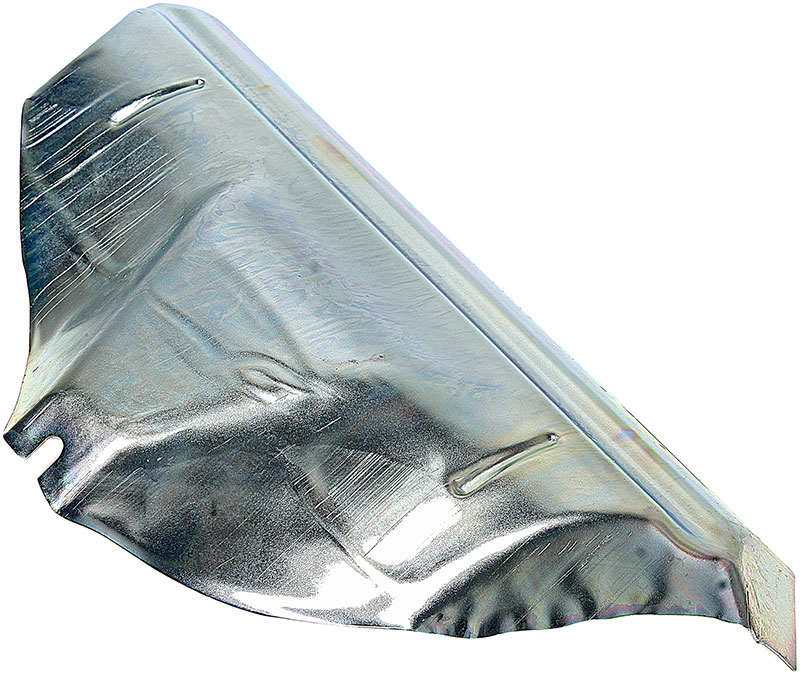
During engine operation, its exhaust manifold heats up to several hundred degrees, which is dangerous in a cramped engine compartment. To solve this problem, many cars use an exhaust manifold heat shield - all about this detail is described in this article.
Purpose of the exhaust manifold screen
As you know, internal combustion engines use the energy released during the combustion of the fuel-air mixture. This mixture, depending on the type of engine and operating modes, can burn at temperatures up to 1000-1100 ° C. The resulting exhaust gases also have a high temperature, and when passing through the exhaust manifold, they expose it to serious heating. The temperature of the exhaust manifold of various engines can range from 250 to 800 ° C! That is why the manifolds are made of special grades of steel, and their design provides maximum resistance to heat.
However, heating the exhaust manifold is dangerous not only for itself, but also for the surrounding parts. After all, the manifold is not located in the void, but in the engine compartment, where next to it there are many engine components, cables, electrical components and cables, and finally, the body parts of the car. With an unsuccessful design or in cramped engine compartments, excessive heating of the exhaust manifold can lead to melting of wiring insulation, deformation of plastic tanks and warping of thin-walled body parts, to the failure of some sensors, and in especially severe cases, even to a fire.
To solve all these problems, many cars use a special part - the exhaust manifold heat shield. The screen is mounted above the manifold (since there are usually no components under the manifold, with the exception of the tie rods or stabilizer), it delays infrared radiation and makes it difficult for air convection. Thus, the introduction of a simple design and inexpensive part helps to avoid a lot of trouble, protecting engine components from breakdown, and the car from fire.
Types and design of exhaust manifold heat shields
Currently, there are two main types of exhaust manifold screens:
- Steel screens without thermal insulation;
- Screens with one or more layers of thermal insulation.
Screens of the first type are stamped steel sheets of complex shape that cover the exhaust manifold. The screen must have brackets, holes or eyelets for mounting to the engine. To increase reliability and resistance to deformation when heated, stiffeners are stamped on the screen. Also, ventilation holes can be made in the screen, which ensure the normal thermal mode of operation of the collector, while preventing excessive heating of the surrounding parts.
Screens of the second type also have a steel stamped base, which is additionally covered with one or more layers of high-temperature resistant thermal insulation. Usually, thin sheets of mineral fiber material coated with a metal sheet (foil) reflecting infrared radiation are used as thermal insulation.
All screens are made in such a way as to follow the shape of the exhaust manifold or cover its maximum area. The simplest screens are an almost flat steel sheet covering the collector from above. More complex screens repeat the shapes and contours of the collector, which saves space in the engine compartment while improving the thermal protection characteristics.
Installation of screens is carried out directly on the manifold (most often) or the engine block (much less often), 2-4 bolts are used for installation. With this installation, the screen does not come into contact with other parts of the engine and engine compartment, which increases the degree of its protection and meets fire safety requirements.
In general, exhaust manifold screens are very simple in design and reliable, so they require minimal attention.

Issues of maintenance and replacement of exhaust manifold screens
During the operation of the car, the exhaust manifold screen is subjected to high thermal loads, which leads to its intensive wear. Therefore, the screen should be periodically checked for its integrity - it should be free of burnouts and other damage, as well as excessive corrosion. Particular attention should be paid to the places where the screen is mounted, especially if it is brackets. The fact is that it is the points of contact with the collector that are subject to the greatest heat, and therefore the most at risk of damage.
If any damage or destruction is found, the screen should be replaced. This recommendation especially applies to cars in which the exhaust manifold screen is installed normally (from the factory). Replacement of the part is performed only on a cold engine, to perform the work, it is enough to unscrew the bolts holding the screen, remove the old part and install exactly the same new one. Due to the constant exposure to high temperatures, the bolts "stick", so it is recommended to treat them with some means that facilitate turning out. And after that, it is necessary to clean all threaded holes from corrosion and dirt. You don't need to do anything else.
If the car did not have a screen, then retrofitting should be done with caution. First, you need to choose a screen that is suitable in design, shape, size and configuration. Secondly, when mounting the screen, there should be no wiring, tanks, sensors and other components next to it. And thirdly, the screen must be mounted with maximum reliability, to prevent its vibrations and movements during the operation of the car.
Finally, it is not recommended to paint the collector screen (even with the help of special heat-resistant paints), apply thermal insulation to it and change the design. Painting and changing the design of the screen reduces fire safety and worsens the temperature in the engine compartment.
With proper installation and replacement of the exhaust manifold screen, a comfortable temperature will be maintained in the engine compartment, and the car will be protected from fire.
Post time: Aug-27-2023
